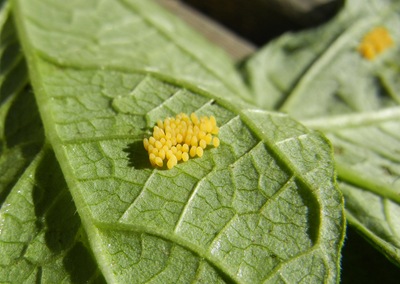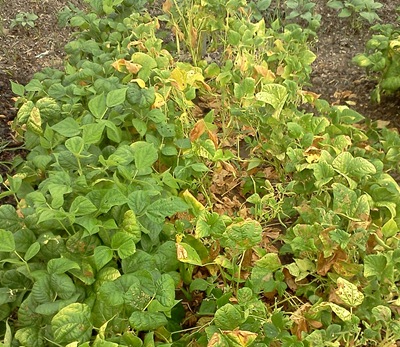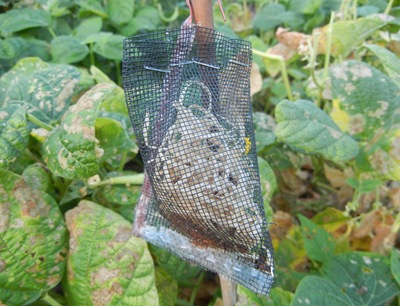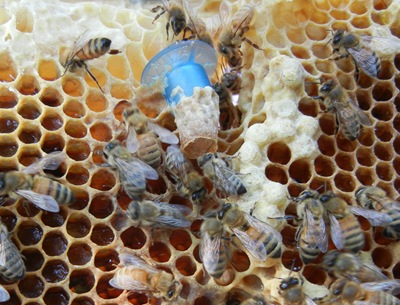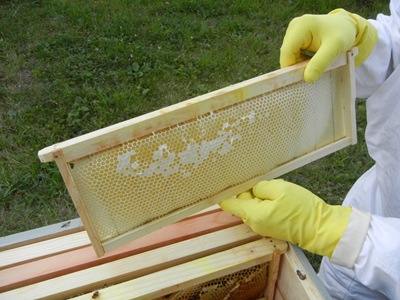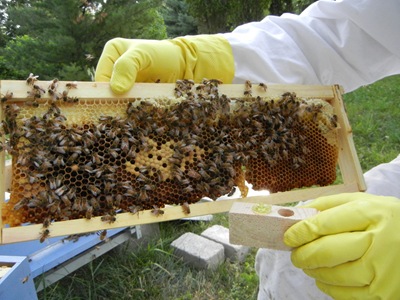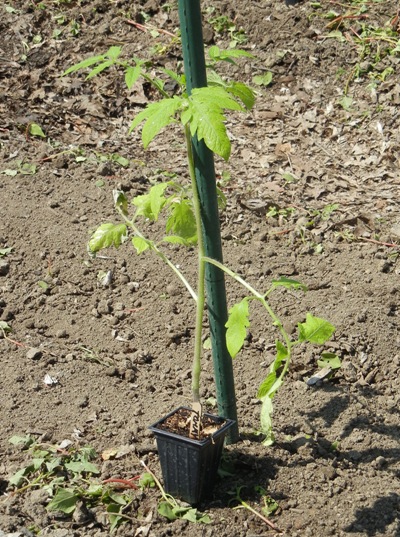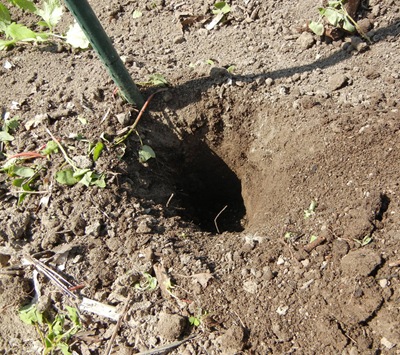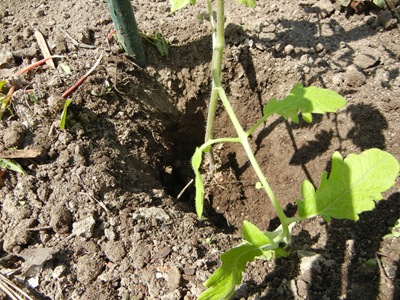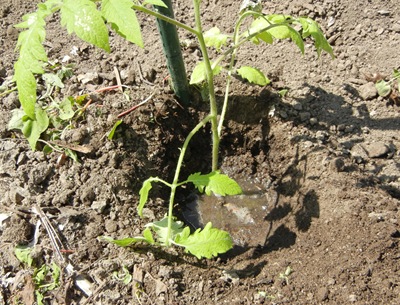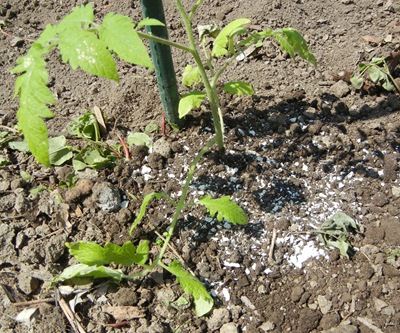I published my first blog on this site back when it was Blogspot back in 2004. For the last year and a half I’ve run a little experiment posting my blog entries both here and at an account I created on Wordpress. While the Blogger account is getting ten to fifteen times as many views—perhaps because it’s the one I usually link to in my facebook statuses--the Wordpress version generates more actual responses from readers. Since it’s apparent something about the Wordpress site just works better I’m shuttering this version for now.
Whether you are one of my regular readers or this is your first time here, I hope you’ll follow my future posts at https://driftlessroots.wordpress.com/
Tuesday, January 15, 2013
I’m Moving
Shady Character Tuesday, January 15, 2013 Comments (0 )
Thursday, July 19, 2012
Bugging the Bugs that Bug the Beans
About five weeks ago I started seeing something on my bush beans. I was expecting them and knew what to look for.
Those pretty yellow bumps are the eggs of a Mexican bean beetle. The adults, which I don’t have any of my own pictures of, resemble ladybugs. They are related, but the bean beetle has more of an orangey color and small spots in horizontal bands.
When the eggs hatch you can find the larvae feeding on the underside of leaves. They’re yellowish as well and are covered with spines.
The adults and larvae feeding on the leaves of the bean plants can obviously do a lot of damage. What I find interesting is that they appear to like some varieties of beans more than others. In this picture there are three rows of beans. From left to right they are Black Valentine, Jacob’s Cattle Gasless and Lina Cisco’s Birdsegg.
Notice anything? It looks like the beetles don’t especially care for the Black Valentine compared to the other two. They’re also more or less leaving my white kidney and pole lima beans alone.
So how does one control them in an organic garden? At first I was doing the simplest approach—removing and destroying the eggs and adults whenever I found them. But given the number of bean plants I have and the fact that I can’t get to the garden every day that approach wasn’t going to do much.
Here’s one of the advantages of having a plot in a community garden. I and several other gardeners on the committee were charged with monitoring our bean plants and reported when the first eggs were spotted. Whoever was in charge of such things then ordered some predatory wasps that, being really, really pricey are out of the range of most home kitchen gardeners. The timing of the wasps’ release is very important so they are shipped overnight just before they emerge.
A little mesh bag is hung inside the bean plants (I moved this one out for a picture) so the wasps don’t have to go far. They’re very tiny and I haven’t seen any. The wasps lay their eggs in the bean beetle larvae where they hatch, feed on the beetle thus killing it, pupate and then emerge to start the cycle all over again on more larvae. These little buggers are gruesomely effective. This is the third year I’ve been growing beans here and the first time the beetles have been noticeable. The wasps have been used in the past and other gardeners report that they worked very well in knocking back the beetles for several years. My plants are forming beans that should mature and be harvestable. With some luck next year’s crop won’t have to suffer this kind of infestation.
Using the wasps to treat for the beetles is an example of a biological control. Do you employ biological controls in your garden?
Shady Character Thursday, July 19, 2012 Comments (3 )
Thursday, July 12, 2012
Tommy Bound
Tommy the San Marzano tomato is growing by leaps and bounds. All of our tomato plants are thanks to the organic compost I planted them with and regular watering during this annoying drought. I’ve had to pay close attention to keep them from growing into an unrestrained tangle. Last year I tried pruning and staking my tomato plants. It’s not just my inner Bondage Master at work, either. Tomato plants are vines. Except for varieties that have been bred to stop growing at a certain height, they continue to grow through the season and can become a big, sprawling mess. I prefer to keep my plants up off the ground. I do this by pruning them to one or two main vines and tying them to upright stakes.
Pruning tomatoes is pretty simple once you get the hang of it. On a tomato vine the leaves grow out each side as the vine grows longer. Left to its own devices, another branch of the vine called a sucker would sprout from the vine right above each leaf. Here’s a pencil-sized sucker that I’ll remove to keep the vine restrained. The vine is on the right, the leaf is on the left and the sucker is sticking up between them.
To remove suckers I just snap them off with my fingers if they’re small, or snip them with shears if they’ve gotten big and woody. Then the plant looks like this. The spot where the sucker was removed right in the middle.
The second part of this equation is keeping the pruned vines up off the ground. Those wire tomato cages you see everywhere? They’re pretty much worthless for any but the smallest plants. I use wooden or plastic-coated steel stakes eight feet in length buried about eighteen inches in the ground. The vines are tied to the stakes using old t-shirts ripped into strips. The fabric is soft and doesn’t cut into the vines if they blow around in the wind. I first tie the strip tightly around the stake, then bring the vine next to the knot and tie a loose loop around it so it has some room to move and grow.
Why go to all this effort? It’s more than just keeping the garden neater. The spores of diseases that can damage the leaves and fruit of tomatoes are harbored in the ground. Splashing rain—assuming we ever get any again—would move the spores up onto the plants more easily if they’re laying on the ground. Also, by keeping the plants slender and up in the air, they dry off quicker. It’s also been claimed that by limiting their growth this way that they produce less fruit but that it’s larger. That may be true because last year I had some pretty big tomatoes. I don’t particularly want larger fruit, but I do want the other benefits of pruning and staking. Training the plants this way also makes it easier to monitor and pick the fruit. Less stooping is always welcome.
Thanks to this tough love Tommy and his friends are coming along well in spite of the uncooperative weather. Before long these green tomatoes will be ripe and ready for eating and preserving.
How do you grow your tomatoes? Do you prune and stake them? I’m interested to hear about others’ experiences and what they’ve learned.
Shady Character Thursday, July 12, 2012 Comments (2 )
Labels: Gardening, Tomatoes, Tommy, Vegetables
Wednesday, July 4, 2012
Bee News Updates: Bad, Good and Good!
Life's that thing we all do that requires taking some bad with some good and hopefully making the best of things along the way. We’ve had bad and good news lately regarding the bees, but fortunately the good is winning out.
When we were out adding supers to a couple of the busier hives in the country apiary the other day we got the bad news: An elderly neighbor who had problems with the way we were keeping our bees –he thought we should have them in the shade!—was still pestering our host. In the interest of maintaining good relations, we agreed to move them to a new location. Fortunately, and I mean really fortunately, another neighbor of our previous host was not only willing to host them, she has a nearly ideal spot, doesn’t mind how many we have, and says we can keep there for the foreseeable future! On top of that, I’ve renewed an acquaintance from twenty-plus years go. With a new site available, we screened off the entrances, tied and taped the hive components together and loaded them on and in The Other Mark’s van.
A short drive later we had them placed and leveled. The whole process went quickly and smoothly and we never suited up or used smoke. We put brush and boards in front of the entrances so they’d be confused when they emerged and have to reorient to their surroundings. This should keep them from trying to fly back to their previous location when they come back in from foraging. Fingers crossed.
The other news concerns the queen cells we installed when we did the splits as related in my previous post. The split we made from Margaret, the booming package hive, had its queen emerge normally, but the one we made from Mary and placed in our back yard never emerged at all. I was able to obtain another VSH queen cell and install it a week after the first one. Today I opened the hive to check and found an encouraging sight.
See how the end of the cell is opened in a nice, neat circle? That indicates that the queen, the “real” Ruby for record-keeping purposes, emerged normally and should be somewhere in the hive. I didn’t go looking for her. I’ll leave the hive alone for a couple of weeks to give her time to mature and mate and then do a full inspection to see if she’s started laying eggs. Wish her luck!
Shady Character Wednesday, July 4, 2012 Comments (3 )
Labels: Beekeeping
Sunday, June 24, 2012
That Time I Did the Splits
Yesterday morning The Other Mark and I got together at the apiary and did splits. We had been discussing for a while whether we could or if we should even try. With the input of more experienced beekeepers we decided to go ahead and give it a try. What? You knew I was talking about beekeeping, didn’t you?
The Dane County Beekeeping Association received a grant to obtain and propagate Varroa Sensitive Hygiene Queens. In brief, these queens have been selectively bred for behavior that protects their hives from a plethora of pests and diseases greatly reducing the need for nasty chemical interventions. And they’re expensive. The grant and generous work of one of our members allowed others in the association to purchase them for much, much less so I ordered two intending to use them to requeen the two package hives we got back in May. Then, we learned at the last meeting that we could use these queens to make new hives by splitting our existing ones
Splitting a hive involves removing frames of brood, pollen and honey along with any bees on them from an existing hive and putting it into an empty hive to start a new colony. This is one of the honey frames we took from Mary, the hive we rescued from a wall. We also took a couple of frames with brood in various stages including capped, and another frame of honey and pollen.
The queen cells were brought home in a wooden block that had holes drilled to accommodate them. The queen cell hangs down from a little plastic cup. How it’s constructed I don’t know but I should read up on that. It’s doubtless an interesting process. We selected a frame that had a nice patch of brood in various stages of development…
…and just jammed the cell into the middle of it maintaining the vertical orientation.
Then, we placed the frames in their boxes and, in the case of the split we took from Margaret, positioned the hive on the last vacant stand in the apiary. The one from Mary—and this is the exciting part!—I loaded into my car and brought home to a spot I’d prepared in the back yard. Meet Ruby.
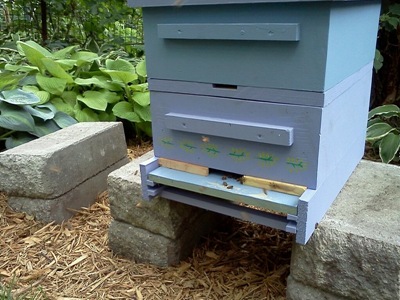 We did the splits early in the morning before the foragers had started flying for the day. When I got home and removed the screens we’d stuck on for transport they slowly, placidly began coming out to explore their new home. By mid-morning there were a good number of gentle, relaxed bees flying around the hive. I spent a good part of the day just watching them.
We did the splits early in the morning before the foragers had started flying for the day. When I got home and removed the screens we’d stuck on for transport they slowly, placidly began coming out to explore their new home. By mid-morning there were a good number of gentle, relaxed bees flying around the hive. I spent a good part of the day just watching them.
This is the time of year to be getting a beehive ready for winter, believe it or not, and that’s done by making sure you have a young, laying queen in residence. These queens should emerge in a few days, spend about another week maturing and then yet another week or so after that making mating flights. After that, we should start seeing eggs in the new hives. Our fallback plan, should the new and/or existing hives not be strong toward the end of summer, is to remove the old queens and combine each new hive with an old one. I’m really hoping it doesn’t come to that.
Shady Character Sunday, June 24, 2012 Comments (2 )
Wednesday, June 13, 2012
Tommy Gets Buried
It’s been quite a while since I reported on Tommy’s progress so I thought it was time I tried to catch up. He’s been busy!
On May 14 Tommy was moved to his final home in the garden. Earlier I had installed stakes for all the tomato plants and sowed buckwheat as a spring cover crop. The buckwheat didn’t do so well because the weather turned cool again as soon as I planted. Still, some came up so I now know what it looks like for future reference. Anyway, here’s how I transplant tomatoes:
Start with a sturdy plant you’ve either started from seed yourself or purchased from a local grower or friend. I’ve read that you’re actually better off with a shorter, sturdier plant than an impressively tall one. My plants got a bit taller than I would have liked because I started some of them too early and I even ended up transplanting them a couple weeks before I expected to because the weather was so nice. Thank you, Global Climate Change!
Next, I dug a hole a few inches from the stake. A deep one. Most plants you buy or grow for your vegetable or perennial garden should be planted in the ground at the same level they were at in the pot. Not so with tomatoes. If you pull off some of the bottom leaves and put the plant in the ground deeper, it will grow roots all along the buried section of stem and make for a stronger plant. Tommy was probably a good eighteen inches tall at this point so I buried about another six inches of stem. Alternatively you can also dig a horizontal or slanted hole and lay the plant down but I like to have the initial roots deep.
I dug the hole even a little deeper than I wanted it to finally be and put a big handful of compost in the bottom. Then I watered the hole. That’s right, I watered the hole. Think about it. Where are Tommy’s roots going to be when he goes in there? And when he’s all good and planted how long do you think I’d have to water to get the soil down around those roots wet?
Next I gently removed Tommy from his pot and placed him in the hole.
I backfilled with the soil I removed to make the hole with out stomping, tamping , or even patting. I want rainfall and irrigation water to infiltrate down and around and into that soil and leaving it a little on the uncompressed side facilitates that, so I let it settle on its own. Halfway through the backfilling I watered again just for the heck of it.
When I’d finished returning all the soil to the hole I tried something new. Last year I had some issues with blossom end rot. It looks like a disease, but is actually caused by a deficiency in calcium uptake. It’s probably more pH related than the actual presence of nutrient in the ground but I threw some crushed oyster shell around Tommy and lightly scratched it into the soil. I don’t really expect it to help all that much, but I’ve got pounds of it on hand from my old Chinese-slipper-orchid-growing days.
Next time things get a little kinky with young Tommy and his friends.
Shady Character Wednesday, June 13, 2012 Comments (2 )
Tuesday, May 1, 2012
The Queen is Dead? Long Live the Queen!
A little over two weeks ago we obtained our first colony of bees via a route I hadn’t quite planned on. Armed with a saw, crowbars and various other pieces of equipment we extracted from the wall of a house. When we were done we were not sure whether we had gotten the queen or not. Since installing them in a Langstroth hive the bees have been coming and going, bringing in pollen which is an encouraging sign.
Yesterday we finally opened the hive for the first time to see what was really going on in there. The anticipation was killing me. It wasn’t a pretty sight, but considering how it was established, we weren’t surprised. One of the two boxes of frames had only empty cells and capped brood we presumed was dead since the bees weren’t on that comb to speak of at all. In the other box we did find nectar and honey stores, lots of workers, lots of drones, and no eggs or larvae. We also found queen cells!
The queen cells we saw were opened on the side like these two. This is the result when the first queen emerges and then goes around destroying her rivals. It means that there may be a virgin queen wandering around in the hive. The weather here has been cool and overcast for a while now. If she’s in there, Mary, or perhaps we should say Mary II should come out on a mating flight some sunny day and then eventually start laying eggs. This would be the ideal outcome of this situation since that would perpetuate the genes from the queen that had a hive survive through the winter. I’m crossing my fingers and hope to report good news before the end of May.
Shady Character Tuesday, May 1, 2012 Comments (3 )
Labels: Beekeeping

